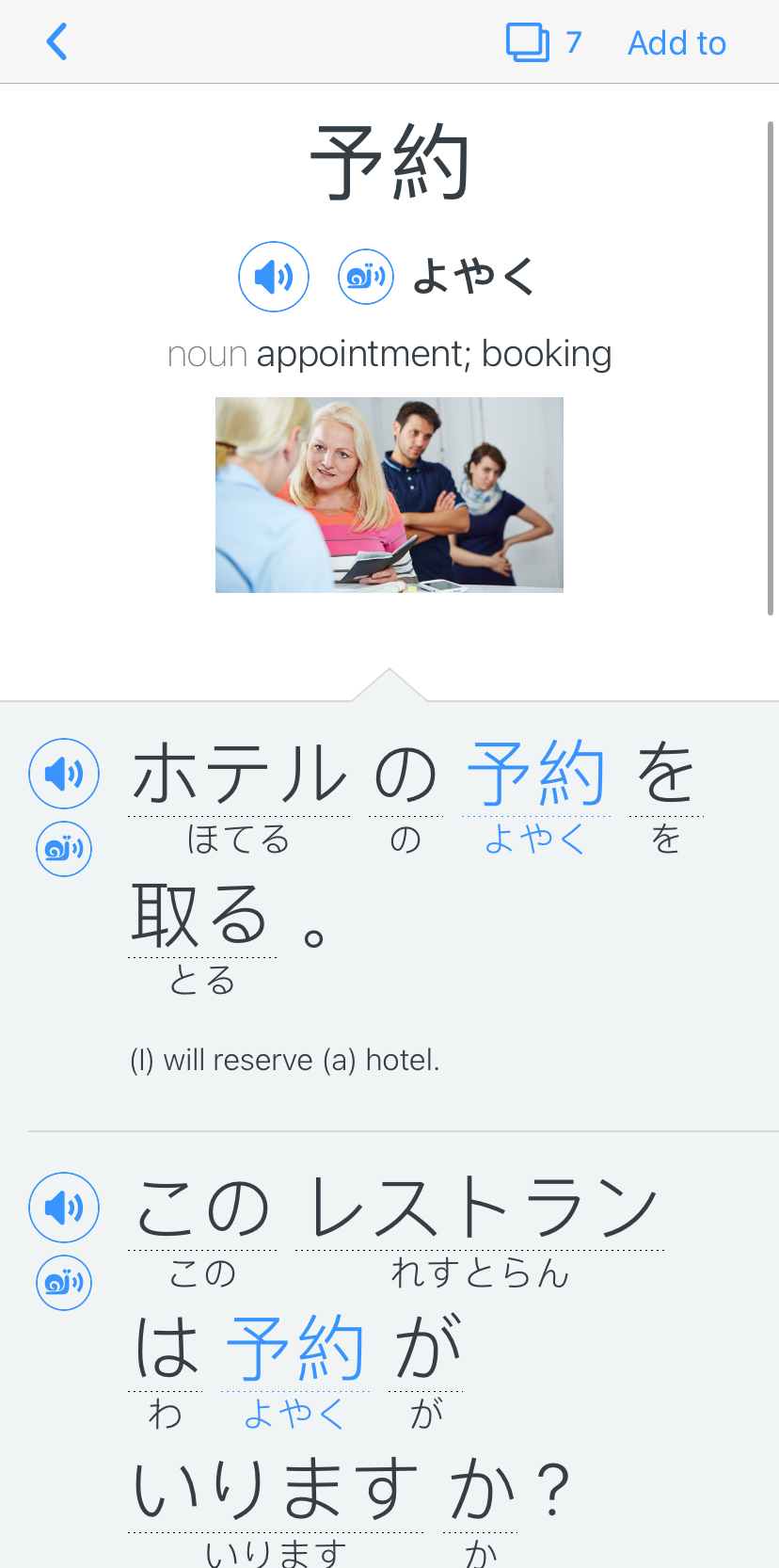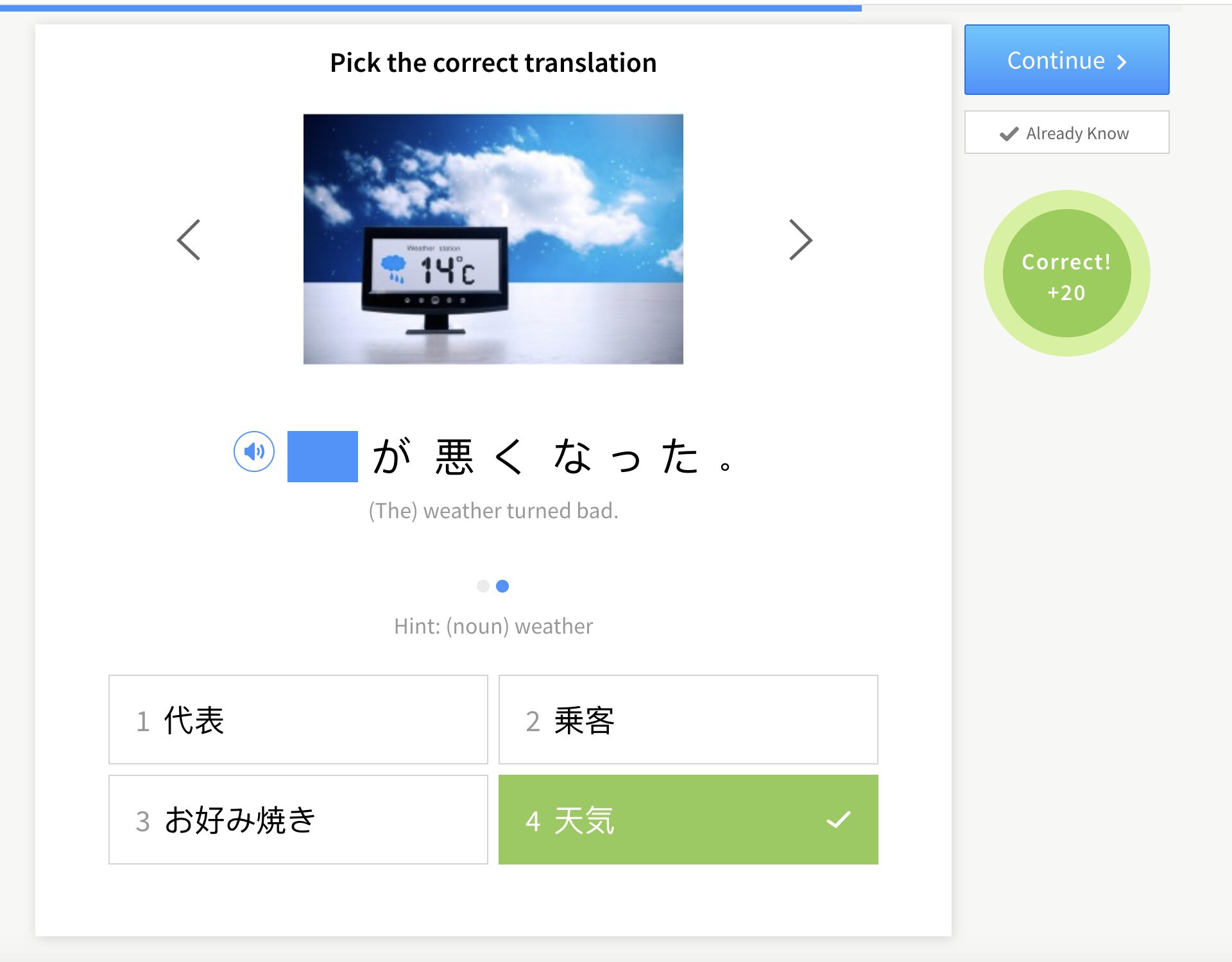8 Steps to Instant Japanese Immersion at Home

As the old saying goes: If you can’t go to Japan, you’ll just have to bring Japan to you. There are all sorts of ways to get immersed in Japanese outside of Japan—so until you make it there, fake it.
I’ve rounded up eight of the most effective ways to immerse yourself in Japanese right from the comfort of your own home.
Download: This blog post is available as a convenient and portable PDF that you can take anywhere. Click here to get a copy. (Download)
1. Ambush Yourself with Japanese in the Morning
Wake up to a Japanese alarm
If your phone is your alarm clock, download a song in Japanese that you like.
Once you’re even half-conscious, you’ll be singing along in Japanese as you jump out of bed.
You might have to switch it up occasionally, but if you’ve got a really good one, you better believe you’ll have it stuck in your head all day.
Think about your daily routine in Japanese
Think about those first thoughts that enter your head in the morning.
From confused dreamscapes to semi-conscious obligations of the morning routine, there’s a constant stream of thought occurring as you go through the motions.
This is a hard one to get used to, but as you input Japanese material, you should be consciously thinking in Japanese sentences—which is easy to get started with when thinking about routines.
For example:
30まず、歯を磨いて、顔を洗って、朝ご飯を作る(まず、はをみがいて、かおをあらって、あさごはんをつくる).
(First, I’ll brush my teeth, wash my face, then I’ll make breakfast.)
Add some Japanese to your breakfast
While chowing down your Apple Cinnamon Cheerios, you can get a Japanese podcast in your ear, review your textbook unit from yesterday with the CD or listen to Japanese newscasts.
You can even pull out your phone and spend 15-30 minutes on an app. Leave some time for a review session, or add new words to a flashcard deck and review them when you have more time.
2. Watch Japanese Television
These days, you can use YouTube and the internet as a whole to access a huge variety of Japanese TV shows, suiting everyone from anime lovers to soap opera addicts.
“Pokémon” and “Dragonball Z” might be the reason some of you first got interested in Japan. Don’t forget that now.
Revisit your old favorites armed with pen and paper.
Of course, just kicking back with an anime in the background isn’t going to work wonders for your Nihongo. It’s all about active watching.
In other words, watch a show with the intention of picking up new vocabulary.
Strive to jot down around 10 new words or phrases each episode. Incorporate them into your growing vocabulary. If you try to learn these words, you’ll be able to pick up on them the next time they come up in conversation.
Language learning is all about spaced repetition and TV series are perfect for this. The same words and lines come up regularly. Hearing the same voices over and again will allow you to get accustomed to the pronunciation and speed of a few different people over a number of weeks.
Below are some recommendations:
Anime
- “One Piece” — Who doesn’t love stories about pirates, adventure and big ol’ hunts for hidden treasure?
- “Gakuen Alice” — Think “Harry Potter,” except each one of the students attending this school has one, unique supernatural power.
J-Drama
- “Hana Yori Dango” — A high school love story. It’s a love triangle that most young Japanese people seem to have an opinion on. Go Team Domyouji!
- “Hanazakari no Kimitachi e” — A high school girl disguises herself as a boy to enter the all-male Osaka Gakuen. The opening disclaimer says it all: “This drama is fictional. Please pardon the foolishness.”
- “Kekkon Dekinai Otoko” — Meet Kuwano-san: a 40-year-old architect, convinced of two things: 1. that he loves steak, and 2. that he has no desire to marry.
There are many more options out there! Take a look at our full-length post on learning with dramas.
3. Listen to Japanese Music
Listening practice is absolutely key. We pick up foreign vocabulary through music for the same reason that we remember the lyrics of English songs: music is catchy.
Choose songs that you enjoy listening to and presto! You’ve got a useful listening exercise that won’t be a total chore.
The hardest part can be finding music that you like and that’s the right level for you. There’s no point starting out listening to a rap so fast that you can’t pick out a single word or even tell that it’s in Japanese.
Try ballads, pop songs, or TV theme tunes, which tend to be slower and make it easier to distinguish individual words. All else fails, track down some children’s music!
Lots of YouTube videos have lyrics written in kana or romaji, and a good exercise is to try to sing along with the music, karaoke style. Hey, consider this your formal training for the day you finally end up visiting Japan. Karaoke is unavoidable!
Here are some of my favorites for learning with:
- Sekai no Owari — “RPG”
- Arashi — “Love so Sweet” (“Hana Yori Dango” theme song)
- Indigo la End — ダビングシーン (“Dubbing Scene”)
To all those Disney lovers out there: you know the songs by heart in English, so why not try them out in Japanese?
To maximize your learning, you should look up words that you don’t know in your Japanese dictionary and then enter them into a flashcard app.
Another option is FluentU.
FluentU takes authentic videos—like music videos, movie trailers, news and inspiring talks—and turns them into personalized language learning lessons.
You can try FluentU for free for 2 weeks. Check out the website or download the iOS app or Android app.
P.S. Click here to take advantage of our current sale! (Expires at the end of this month.)

4. Read and Watch Japanese News

NHK posts やさしい日本語のニュース (やさしいにほんごのニューズ). These are articles written in simple Japanese, alongside videos and audio clips for listening practice.
The NHK page is wonderfully beginner-friendly, allowing users to hover over more difficult words for explanations in simpler Japanese, and glossing all kanji with hiragana.
Unlike watching TV or listening to music, using NHK’s site will help to hone your Japanese reading skills. The NHK site combines the best bits of textbook learning with interactive features.
Reading up on Japanese culture and learning Japanese don’t need to be separate activities: combine the two, and learn to speak about the events with the words that native Japanese speakers would use to discuss them.
To have a go at reading an article, see News Web Easy.
5. Play Games in Japanese
For anyone who likes gaming, switching games to Japanese is an easy way to collect new and interesting vocabulary that you wouldn’t necessarily learn in a classroom.
“Pokémon” is a great place to start: it offers the option of kana (intended for Japanese children) or kanji, so it can be attempted by Japanese learners from lower-intermediate to advanced.
The game’s repetitive situations such as battles, going to the Pokémon Centre, and so on really allow new vocab to become internalized. It won’t be long before it becomes normal to see some of the moves, items and phrases in Japanese.
The best bit is that the more words you look up and the more vocabulary you understand, the better you’ll be able to play the game.
No one wants to be defeated because, at a crucial moment, they didn’t realize that the move しっぽをふる is “Tail Whip,” making it essentially useless.
6. Switch Your Social Media to Japanese
Think about things that you do every day that could be converted into Japanese.
Social media is great for this because:
- It’s online, so the language can usually be changed
- We all spend too much time on it, so we might as well be improving our Japanese at the same time
Some phrases you’ll commonly see when switching your Facebook to Japanese is:
いいね!— The “like” button
XさんとYさんが友達になりました
(XさんとYさんがともだちになりました)
X has become friends with Y
XさんがYさんの写真について”いいね!”と言っています
(XさんがYさんのしゃしんについて “いいね!”といっています.)
X liked Y’s photo
You will learn specific phrases like these, but the most impactful effect is that it will become more and more natural to see Japanese text.
If, like me, your first glance at a page of full Japanese text filled you with vague panic and the conviction that you would never be able to decipher these characters, then I have good and bad news.
The good news? The characters aren’t as alien as they might seem, and after a few months, you will start to scan them as you do English.
The bad news? It will be a challenge.
Learning takes time, and the only real way to learn is frequent exposure. But that’s not really even bad news because you like learning Japanese—that’s why you’re here!
7. Review the Day’s Japanese Input
What did you learn today?
New vocabulary? Some new grammar structures? Awesome new slang?
Refresh those topics in your mind, maybe repeat a few phrases and engage in a familiar drama or even an interesting documentary.
Constant exposure to unfamiliar input is excellent for your learning, but don’t forget to solidify your basics as you go, so you’re steadily building a good arsenal of grammar and vocabulary that will lead to understanding more and more of the unfamiliar.
Another great way to review—and a highly important step in your studying and immersion—is to get a language exchange partner and turn input into output.
Talk about your day, what you’re doing tomorrow, ask them about their plans, etc. Your brain should be dying to bring to the surface some of that language that has become the norm in there.
8. Use Japanese to Put Yourself to Sleep
You’ve eaten, studied and gotten all cozy in bed, but your Japanese immersion is not over yet.
Grab some Japanese reading material (graded readers, children’s books, vocabulary books, novels) and nestle in to learn, review and watch your studying pay off.
Since it’s ridiculously exhausting for your brain to deal with this non-native language, these books are going to put you right to sleep, so you’ll be out like a light in a matter of minutes (this stuff is better than NyQuil).
Immersion doesn’t have to happen in Japan.
Immersion at home works because it makes your newly acquired language a part of your daily life in the way that your own language is. Learning ceases to take place through a textbook or a student-teacher exchange.
Learning a language is not just showing up to a class once a week. It’s about taking initiative and doing all the small things you possibly can between classes.
So, if you can’t get to Japan, bring Japan to you!
Download: This blog post is available as a convenient and portable PDF that you can take anywhere. Click here to get a copy. (Download)
And One More Thing…
If you’re like me and prefer learning Japanese on your own time, from the comfort of your smart device, I’ve got something you’ll love.
With FluentU’s Chrome Extension, you can turn any YouTube or Netflix video with subtitles into an interactive language lesson. That means you can learn Japanese from real-world content, just as native speakers actually use it.
You can even import your favorite YouTube videos into your FluentU account. If you’re not sure where to start, check out our curated library of videos that are handpicked for beginners and intermediate learners, as you can see here:
FluentU brings native Japanese videos within reach. With interactive captions, you can hover over any word to see its meaning along with an image, audio pronunciation, and grammatical information.
Click on a word to see more examples where it's used in different contexts. Plus, you can add new words to your flaschards! For example, if I tap on 予約, this is what pops up:
Want to make sure you remember what you've learned? We’ve got you covered. Each video comes with exercises to review and reinforce key vocab. You’ll get extra practice with tricky words and be reminded when it’s time to review so nothing slips through the cracks.
The best part? FluentU tracks everything you’re learning and uses that to create a personalized experience just for you. Start using the FluentU website on your computer or tablet or, better yet, download our app from the App Store or Google Play.
Click here to take advantage of our current sale! (Expires at the end of this month.)











